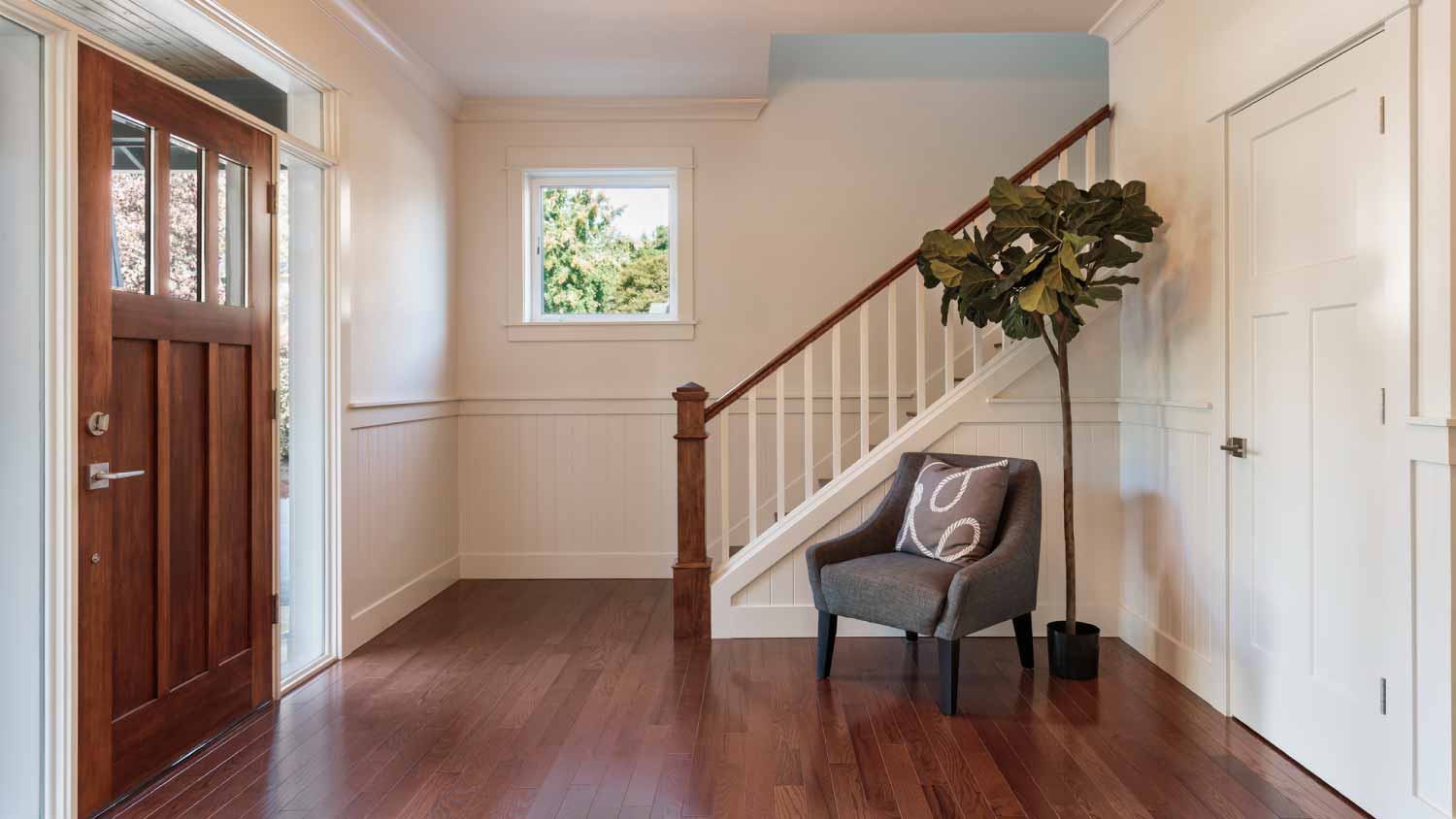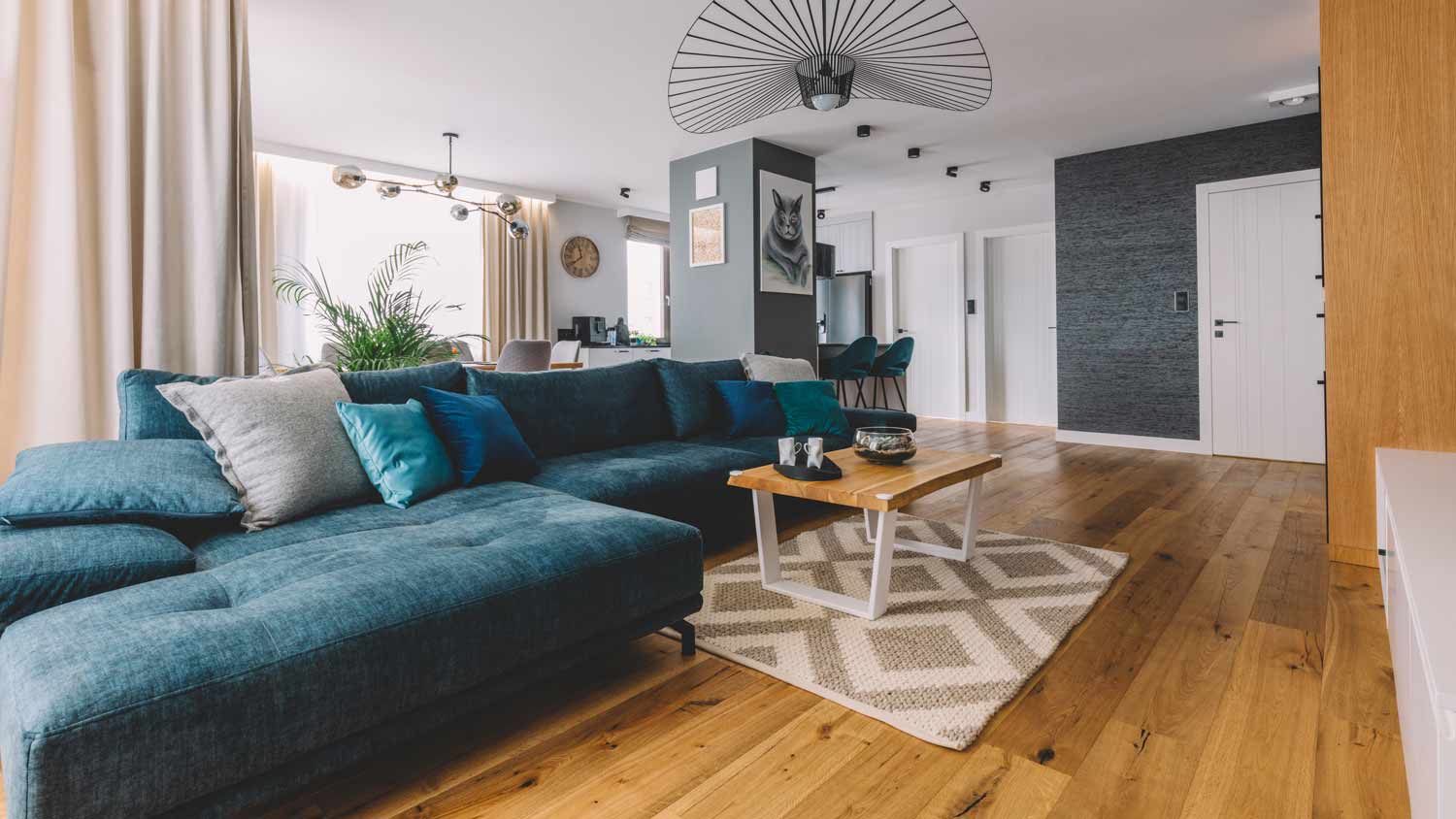How Much Does It Cost to Install Plywood Subflooring?
The average cost to install a new plywood subfloor is between $600 and $700


Plywood is a popular subflooring material because of its strength
Installing a plywood subflooring area of 300 square feet costs $600–$700
You can DIY subfloor installation, which can save $100–$150
The average cost of installing a plywood subfloor for a 300-square-foot room is between $600 and $700 or an average of $620. Plywood is a common material for subflooring due to its strength and affordability. Your subfloor is an important part of your flooring. It is installed on top of the floor joists to help maintain your floor's level, increase stability, improve insulation, and reduce noise in your home.
*For a 300-square-foot room
| National Average Cost | Minimum Cost | Maximum Cost |
|---|---|---|
| $620 | $600 | $700 |
How Much Does It Cost to Install Plywood Subflooring per Square Foot?

Installing a plywood subfloor costs between $4.50 and $10 per square foot, including material and labor fees.
Most builders choose three-quarters of an inch tongue-and-groove plywood interlocks for easier installation and a more solid floor.
“For sub-flooring, we not only specify three-quarters of an inch or more, but we also require tongue-and groove (interlocking) panels,” says Bob Tschudi, Expert Review Board Member and general contractor in Raleigh, NC. “We also specify that the panels are ‘glued and screwed’ and not nailed. This reduces and, in most cases, eliminates squeaking.”
Installing Plywood Subflooring Cost Breakdown
The cost to install plywood flooring depends on the following factors.

Materials
The materials alone cost around $40 to $50 for a 4-by-8-foot panel or around $1.50 per square foot for a 5/8-inch panel. Note that a thicker grade of plywood will increase the cost.
Labor
The labor fees to install subflooring are usually between $25 and $30 per hour, but may vary based on your location and whether the job is straightforward or complex.
Additional work—like removing existing flooring and subflooring, hauling old materials, or preparing a surface—costs extra.
“For many renovations we’ve done, we’ve discovered that people never remove old subflooring, but add new plywood—usually with a heavy-duty glue—on top of existing flooring,” says Tschudi. “This means that we have to cut away many, many layers of wood to get to the original framing, which is time-consuming and adds cost to the project.”
Installing New vs. Replacing Plywood Subflooring
Installing a new plywood subfloor in a 300-square-foot area typically costs $600 to $700 (based on four-and-a-half hours of labor at $25 per hour).
The cost to replace or repair a plywood subfloor is typically between $600 to $2,600. You generally have to pay extra when replacing subflooring because it entails removing the finished flooring and subflooring of the damaged area, disposing of the old material, and installing new material.
Cost to Install Plywood Subflooring Yourself
Installing subflooring requires certain skills and previous experience with woodwork and flooring. While it’s possible to DIY subflooring and save on the labor fees—which can be anything around $100 to $150—hiring an experienced flooring professional ensures your floors are level and sturdy.
A professional can also help determine the right material for your subflooring and whether you need to seal your subflooring to prevent potential moisture damage.
Cost to Install It Yourself vs. Hiring a Contractor
When you hire a professional to install your subflooring, you typically pay $600 to $700. While if you install subflooring yourself, expect to pay $500 to $600. Be sure to factor in an extra $100 to $500 to rent or buy the tools and supplies if you don’t have them already.
“Subflooring work is labor-intensive and fraught with problems,” says Tschudi. “We’ve done the work ourselves and have contracted it out and, in the end, we feel that it’s always better to contract it out to an experienced framing team.”
Tools and supplies you need include:
Circular saw
Jigsaw
Miter Saw
Wood shims
Construction adhesive
Drill
Measuring tape
Step ladder
Screws
Screwdriver, drill, or electric driver (preferred)
Safety gear (eye goggles, gloves)
Installing Plywood Subflooring Questions and Answers
What kind of plywood is suitable for subflooring?
Interior plywood is ideal for rooms not exposed to moisture, such as bedrooms. This makes for a good subfloor for carpeting, tiles, vinyl, engineered wood laminate, and hardwood flooring.
Exterior plywood is sealed and more suitable for bathrooms, kitchens, and other rooms susceptible to water and moisture. Some people choose to have plywood as a flooring material, not a subflooring, but that requires the plywood to be sealed and ready for all of the external wear-and-tear factors.
Installing plywood on basement floors is not the best choice since they are susceptible to more moisture and possible flooding or pest problems.
“When we put plywood in areas that are susceptible to moisture, we not only coat the edges with painters’ caulk, but we use surplus or low-cost paint to cover the rest of the wood,” says Tschudi.
What makes plywood a good material for flooring?
Plywood is an engineered wood material that consists of three or more thin layers of wood (veneers) attached together with glue.
Plywood is strong, versatile, stable, and affordable, making it the perfect material for subfloors.
What other projects should I do at the same time?
While installing subflooring, you’re also probably thinking of installing your flooring afterward. It’s a great idea to pick a flooring material that would work well with plywood subflooring, such as hardwood flooring or laminate flooring.

.jpg?impolicy=leadImage)



- What Type of Plywood Is Best for Subflooring?
- How to Prevent Squeaky Floors: 6 Subflooring Installation Tips That Can Help
- How to Replace a Subfloor: The Complete DIY Guide
- 11 Types of Flooring to Consider for Your Home
- Who to Hire to Replace the Subfloor in Your Home
- 5 Alternative Flooring Options for Your Basement
- 6 Options For Improving Your Attic Flooring
- 7 Budget-Friendly Kitchen Flooring Options for Every Style
- Estimate Your Flooring Cost With These Factors
- What Types of Flooring Can Be Installed Over Ceramic Tile?










